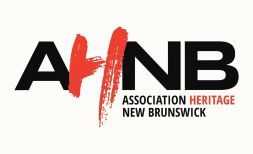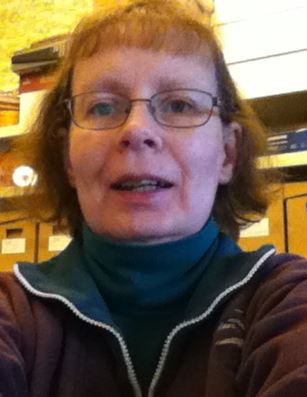 By Katherine Biggs-Craft, Saint John Jewish Historical Museum
By Katherine Biggs-Craft, Saint John Jewish Historical Museum
April 19, 2019
If your historic place is like mine you find yourself spending time with a lot of people who used the internet in some way to find you – e.g. NB Tourism, your community’s webpage, or social media. The trick is how to make your historic place stand out in a very crowded world of information and get visitors into your place. It can be easy enough to do if you know how to do it. And this is where Regeneration Works / The National Trust of Canada https://regenerationworks.ca/ comes in.
Since November 2018, I have registered for five online webinars through Regeneration Works and gotten ideas on how to attract more visitors, tell my story, use social media, create a brand, and figure out how to set prices for museum tours and souvenirs. Led by staff and consultants of The National Trust of Canada, each 45-minute session offers some simple tools to make these tasks a bit easier and sometimes even leaves you with a new way of looking at what your historic site does. The workshops are free (so for small community museums easy to budget), last about as long as it takes to eat a late lunch, and afterwards you receive links for the presentation (which is great if you need to refresh those key points).
One of the most significant points for me came from Jonathan Wade – a non-profit professional with more than 25 years of experience, who offers professional consulting to hundreds of non-profit organizations, co-ops and individuals seeking to start or expand a social enterprise. He emphasizes that we have to place a value on the heritage experience – something that can be accomplished by charging an admission fee and giving good value for the experience in exchange. People have a perception that if you have to pay, it is better than something you get for free. Part of this is consideration of the “four Ps” – price (what you charge), product (what you are offering), placement (where it can be found), and promotion (marketing).
 The information from Wade’s webinar assured me that it is not hard to do, and reinforced some of that we are already doing. For example, the Saint John Jewish Historical Museum charges $5.00 for admission – and for that you receive a guided tour of the Museum. If you are lucky enough to obtain the tour from one of our community volunteers, you leave with a lot of stories about what things were like in Saint John in decades past (from someone who actually lived the experience), knowing that the experience was money well spent.
The information from Wade’s webinar assured me that it is not hard to do, and reinforced some of that we are already doing. For example, the Saint John Jewish Historical Museum charges $5.00 for admission – and for that you receive a guided tour of the Museum. If you are lucky enough to obtain the tour from one of our community volunteers, you leave with a lot of stories about what things were like in Saint John in decades past (from someone who actually lived the experience), knowing that the experience was money well spent.
For three of the Regeneration Works webinars, the focus was on telling and sharing the story of your historic place. The story you tell has to be engaging, inspiring, and compelling. Ways to do this included talking about how your site is unique, making emotional connections, and focusing on the people. There is even a suggestion to put your reader or watcher into the picture and see your site through their eyes.
We also have to think about who is going to tell the story – will it be your staff, volunteers, community members, or partners – and why you are telling the story – what do you want people to know? To encourage visitation? Solicit donations?
You also need to have a call to action – to visit, to donate – and allow for comments and questions. You need to tell the right story for the right audience which means you need to know who is reading or watching your stories and how to keep them interested. You need to be creative and fearless, to use text, photos, and videos that will catch interest and keep your audience engaged. And every story needs to end with a call to action – to ask questions, to comment, to visit, to donate, to volunteer.
It is also important where you share your story. Most information is now on line – in websites and social media. It is important to choose the right social media platform to reach your audience or find a new audience. There’s Facebook – lots of users who are getting older and who want to engage in conversation; Twitter – you can’t write a lot but the information is easy to share; Instagram – appeals to younger people and relies on images; and YouTube – where you can store videos and reach a wide audience. The presentation suggests on focusing on only one or two of these and to do them well. Try for two or three posts a week, use photographs (which are more likely to catch attention than words alone), be consistent in timing and style, and use hashtags (choosing ones already there to follow or create new ones).
Your historic site should also have a brand. The elements of a great brand provide value, are memorable, engage the audience, appeal to emotions, are focused, tell stories, and are consistent to build long term awareness. To figure out what your brand is you need to ask yourself some questions: what is your message? What is unique about your site? Why should someone care about you? And once you establish what your brand is you need to use it consistently to maintain your reputation.
If you are successful in telling your story – to let people know about your unique site, your interesting people, and engaging events – visitation, ticket sales, and positive reviews will follow.
The next webinar at https://regenerationworks.ca/events/ is on May 1 – Rural Heritage: A follow-up discussion from the round-table in Fredericton. But check back often to look for other webinars.
For additional ideas you can also access the Marketing Your Historic Place Toolkit found at https://regenerationworks.ca/resources/marketing-your-historic-place-toolkit/
Now having listened to the ideas from the experts, I need to get busy writing some great stories about the Saint John Jewish community and planning some interesting events – hmm – now whose story should I tell first… stay tuned!
Katherine Biggs-Craft has been the Curator of the Saint John Jewish Historical Museum since 1998 and somehow manages to juggle all the tasks that need doing in a small museum. She is also recording secretary for the Saint John Fundy Heritage Zone.



